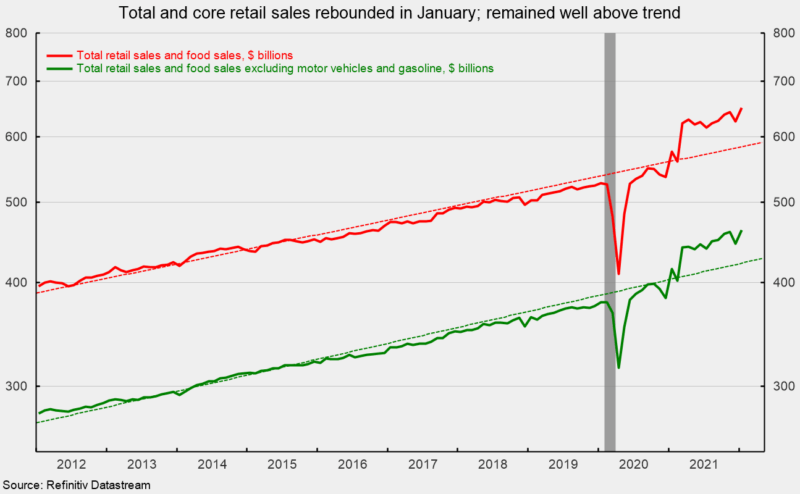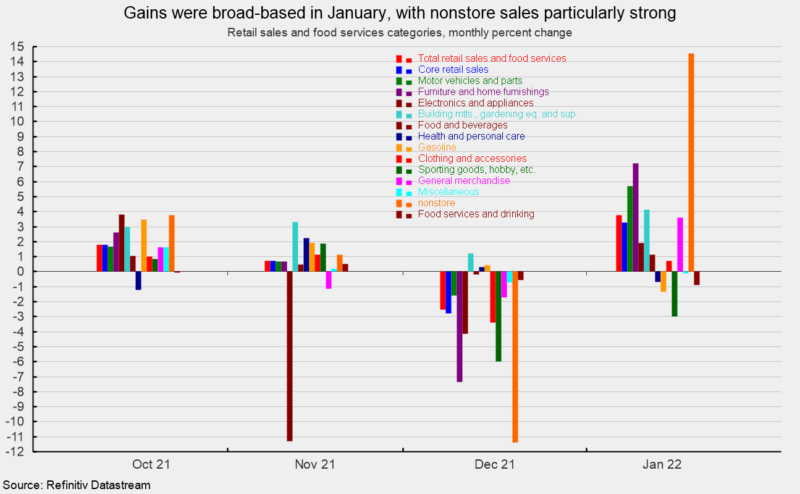Retail Spending Rebounded in January
Retail sales and food-services spending rose 3.8 percent in January following a 2.5 percent drop in December. The strong gain suggests first quarter gross domestic product may be off to a good start. However, today’s retail sales data are not adjusted for price changes. Therefore, it’s likely that the real or price-adjusted results would be less robust. Still, total retail sales are up 13.0 percent from a year ago and remain about 11.5 percent above the pre-pandemic trend (see first chart).
Core retail sales, which exclude motor vehicle dealers and gasoline retailers, also jumped 3.8 percent for the month, following a 3.2 percent fall in December, leaving that measure with a 11.4 percent gain from a year ago. Core retail sales are 9.8 percent above the pre-pandemic trend (see first chart).
Most categories were up in January with eight posting increases while five showed declines. The gains were led by a 14.5 percent surge for nonstore retailers following an 11.4 percent plunge in December. Furniture and home furnishings store sales posted a 7.2 percent gain for the month followed by motor vehicles and parts dealers with a 5.7 percent gain, building material and garden equipment and supplies dealers with a 4.1 percent rise, and general merchandise stores with a 3.6 percent advance.
Sporting goods, hobby, and bookstore sales led the decliners, down 3.0 percent, followed by gasoline, down 1.3 percent, food services and drinking sales, off 0.9 percent, and health and personal care store sales, down 0.7 percent (see second chart).
Overall, total and core retail sales posted robust rebounds in January following steep drops in December, keeping them well above pre-pandemic trends. The strong results in January suggest that first quarter gross domestic product may have gotten off to a good start. However, after adjusting for price changes, it’s likely that the real or price-adjusted results would be less robust. Nevertheless, the economic outlook is for continued growth and sustained upward pressure on prices. Pressures are likely to continue until demand pulls back and/or supply rises further. Easing of labor and materials shortages and reductions in logistical bottlenecks would help producers boost supply.







